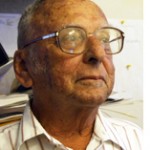By Norman Manson

SAN DIEGO–The most inspiring aspect of this memoir – in addition to its story of sheer survival – is the way Fran and Simon Laufer created a thriving, prosperous life for themselves and their family in the United States, at the same time remaining totally true and committed to observant Orthodox Judaism.
Simon, her future husband, grew up in Krakow and early on showed excellent business acumen. This skill was crucial in enabling him to survive the war years in Auschwitz and Buchenwald. After liberation, he went to the Bergen-Belsen area, where he met Fran and, despite her early objections, talked her into marrying him.
Not all the recipients proved worthy, but this did not deter them from continuing their tikkun olam (helping the world). After operating a department store for several years, he opened a wholesale sweater distribution firm, which he ran for the rest of his life. He passed away in 1998.
And in some ways the most moving, inspiring chapter of the book deals with the couple’s celebration of their 45th wedding anniversary and Simon’s 70th birthday. They repeated their marriage vows and were feted by rabbis and other community leaders, as well as fellow Holocaust survivors. The tributes to them were richly deserved, and they responded with very moving addresses.
The book could have used a more thorough editing job. There are a few statements at variance with facts (The Russians did not advance against the Germans in 1940-41; they ostensibly were allies then!). Also, several of the photos were too small to be effective. But these minor defects do not in any way detract from the story of this beautiful couple – how they made themselves a prosperous and truly Jewish life in all respects, after starting from scratch with virtually nothing.
*
Manson is a freelance writer based in San Diego